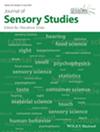This study aimed to explore whether the three primary sensory attributes—fruitiness, bitterness, and pungency—could be used to discriminate among seven Greek olive oil varieties. Sensory data from 110 extra virgin olive oil samples, collected over 9 years by the Kalamata Olive Oil Taste Laboratory, were analyzed using principal component analysis (PCA) and learning vector quantization (LVQ). PCA revealed that varieties with overlapping sensory profiles formed three distinct sensory groups: Koroneiki-Lianolia-Chalkidikis, Makri-Manaki-Megaritiki, and Athenolia. Consequently, the research focus shifted to evaluating the ability of these sensory attributes to differentiate between groups of varieties rather than individual varieties. LVQ, validated through leave-one-out cross-validation (LOOCV), classified the olive oil samples into these sensory groups with 80% accuracy. The results demonstrate that the intensity levels of fruitiness, bitterness, and pungency provide valuable information for distinguishing groups of varieties with similar sensory profiles. While the study benefits from a robust nine-year dataset, limitations include a relatively small sample size, potentially limiting generalizability, and a selection criterion that excludes samples with lower fruitiness scores, possibly introducing a degree of bias.
The study's findings provide practical applications in various areas. For panel training, the identified sensory profiles can serve as benchmarks, helping tasters recognize and classify olive oil varieties. Producers can utilize these sensory profiles for consistent quality control and strategic blending, ensuring their products meet desired sensory standards. Finally, these profiles can be used in culinary education, enabling chefs and food enthusiasts to select and pair olive oils more effectively with different dishes.



